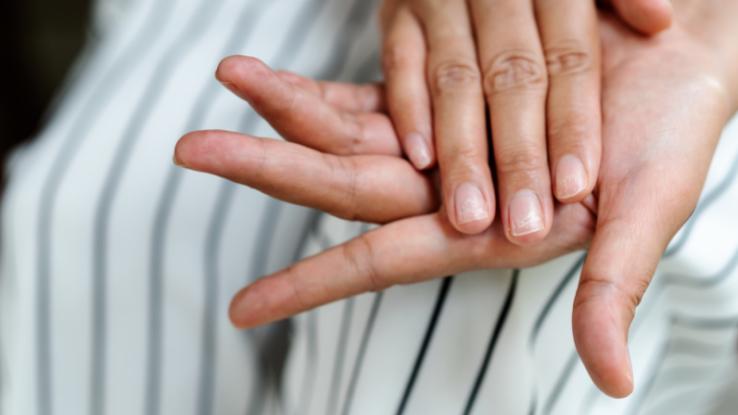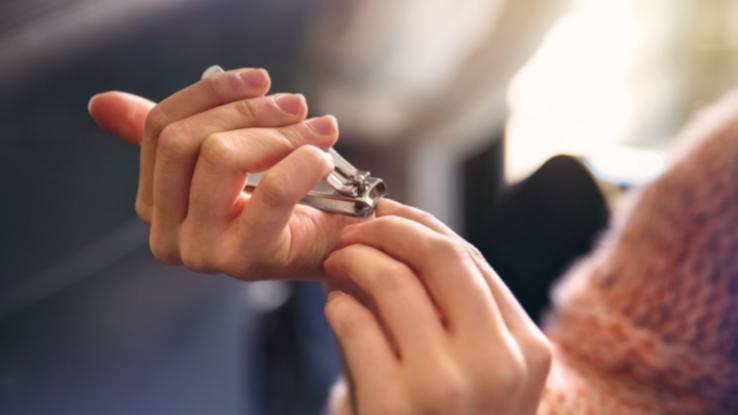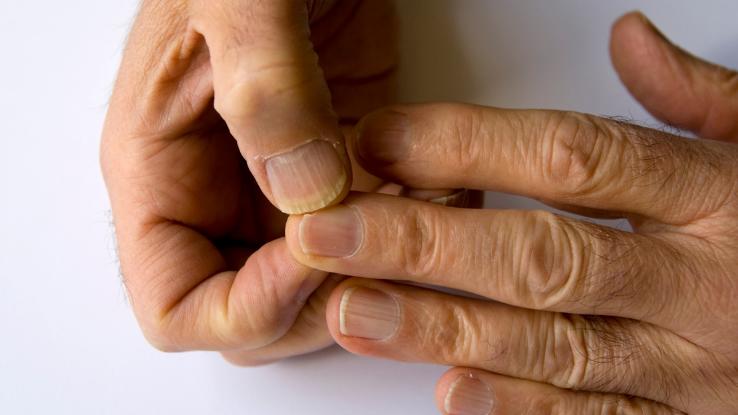
Sure, your fingernails might require a lot of upkeep, but did you know that they can actually tell you a lot about your health? While the look or texture of your fingernails isn’t a surefire way to diagnose all conditions, their appearance can be a pretty solid indicator of one’s health. How so? We’re exploring just that. From what’s considered a healthy nail to damage or coloration to look out for, here’s everything you need to know about the relationship between your fingernails and your health.
What Do Healthy Nails Look Like?
Before you learn what to watch out for when it comes to your nails, it’s important to understand what healthy nails look like. This provides a point of reference, but, perhaps more importantly, proper nail care and health is an essential in its own right. First and foremost, healthy nails are strong; they shouldn’t feel brittle or thin — and they certainly shouldn’t break easily.

Ideally, they should also be smooth in texture, exhibiting no jagged edges, dents, or bumps. That smoothness should extend to the cuticles as well, which, in turn, should not be peeling or jagged. Finally, color is also a critical component when it comes to healthy nails. Any discoloration — whether it’s streaks, spots or yellowing — may be cause for concern.
What Should You Look For When It Comes to Fingernail Health?
So, when examining your fingernails, here’s what you should keep an eye on:
- Yellowing: If your nails have a yellowish discoloration on them, it may be a sign that you are suffering from a respiratory condition. Chronic bronchitis and other respiratory problems may slow down the growth of your nails, which causes them to thicken and become yellow in color. In some cases, the nails may even detach from the nail bed in certain areas. Yellow nails can also be caused by other conditions, such as swollen hands or smoking cigarettes.
- Brittleness: When nails become thin and brittle, allowing them to break easily, it may be a sign that the nails can’t hold onto moisture. This is often a side effect of thyroid disease, which can cause dry skin and nails, or an iron deficiency. Dry nails may also occur if your hands are exposed to water for long periods of time every day.
- Loose Nails: Nails that become loose and, in some cases, separate from the nail bed, can be a sign of infection. Moreover, when nails look as though they are becoming detached in this way, it could also be indicative of a reaction to a drug, psoriasis, or thyroid disease.

- Clubbing: This term is used to describe a condition where the tips of the fingers enlarge and the nails grow around the fingertips. The result is a nail that looks too big for the finger it’s on. Clubbing can be a sign that an individual does not have enough oxygen in their blood, which, in turn, could indicate the presence of lung disease. However, clubbing has also been associated with other conditions, such as liver disease, cardiovascular disease, and inflammatory bowel disease.
- White Spots: For the most part, the tiny white spots that appear on your nails are just a result of an injury to the nail and aren’t indicative of a more serious problem. However, if you notice white spots appearing in areas where you know no trauma has occurred, it could be a sign of psoriasis, eczema, or a zinc deficiency.
- Dark Tips: Also known as Terry’s nails, one’s nails become opaque and exhibit a dark band near the tip. While this may occur naturally due to aging, it could also be a sign of diabetes, malnutrition, congestive heart failure, or liver disease.
- Dark Lines: If dark lines appear under your nails, see a dermatologist right away. This could be an indicator of melanoma, which is a dangerous type of skin cancer.
- Horizontal Indentations: When horizontal indentations form across the nail — also known as “Beau’s lines” — it can be a sign that severe illness has interrupted nail growth. Some of the conditions associated with these horizontal indentations include diabetes, circulatory diseases, and malnutrition. It may also occur with illnesses that involve a high fever, such as pneumonia, scarlet fever, mumps, or measles.
- Depressions: Small dents or depressions in the nails, also known as “nail pitting,” are often associated with skin conditions like psoriasis and chronic dermatitis. In some cases, it may also be associated with alopecia areata, which is an autoimmune disease that causes hair loss. Pitting can also result from an injury to the nail itself.
- Spooning: Spooning occurs when the outer edges of the nail begin to curl up towards the top of the finger. In some cases, the spoon-like scoop formed by the curled nail may even be able to hold a drop of liquid. Spooning can be a sign of an iron deficiency.
Though the changes may seem minor, something as simple as a streak of irregular color on your nails can signal a more serious health condition. With this in mind, make an effort to check the health of your nails regularly. As always, consult your doctor if you notice any significant changes in your fingernail health.
Resource Links:
- “Yellow Nail Syndrome” via National Organization for Rare Disorders (NORD)
- “Yellow Nail Syndrome: A Review” via Orphanet Journal of Rare Diseases, BMC
- “Nail abnormalities” via MedlinePlus
- “Thyroid Disease: A Checklist of Skin, Hair and Nail Changes” via American Academy of Dermatology Association (AAD)
- “Onycholysis” via American Osteopathic College of Dermatology (AOCD)
- “Clubbing of the fingers or toes” via Mount Sinai
- “Terry’s Nails: A Sign of Systemic Disease” via Indian Journal of Dermatology, U.S. National Library of Medicine
- “Fingernails: Possible Problems” via Mayo Clinic
- “Nailing the Diagnosis: Koilonychia” via The Permanente Journal





